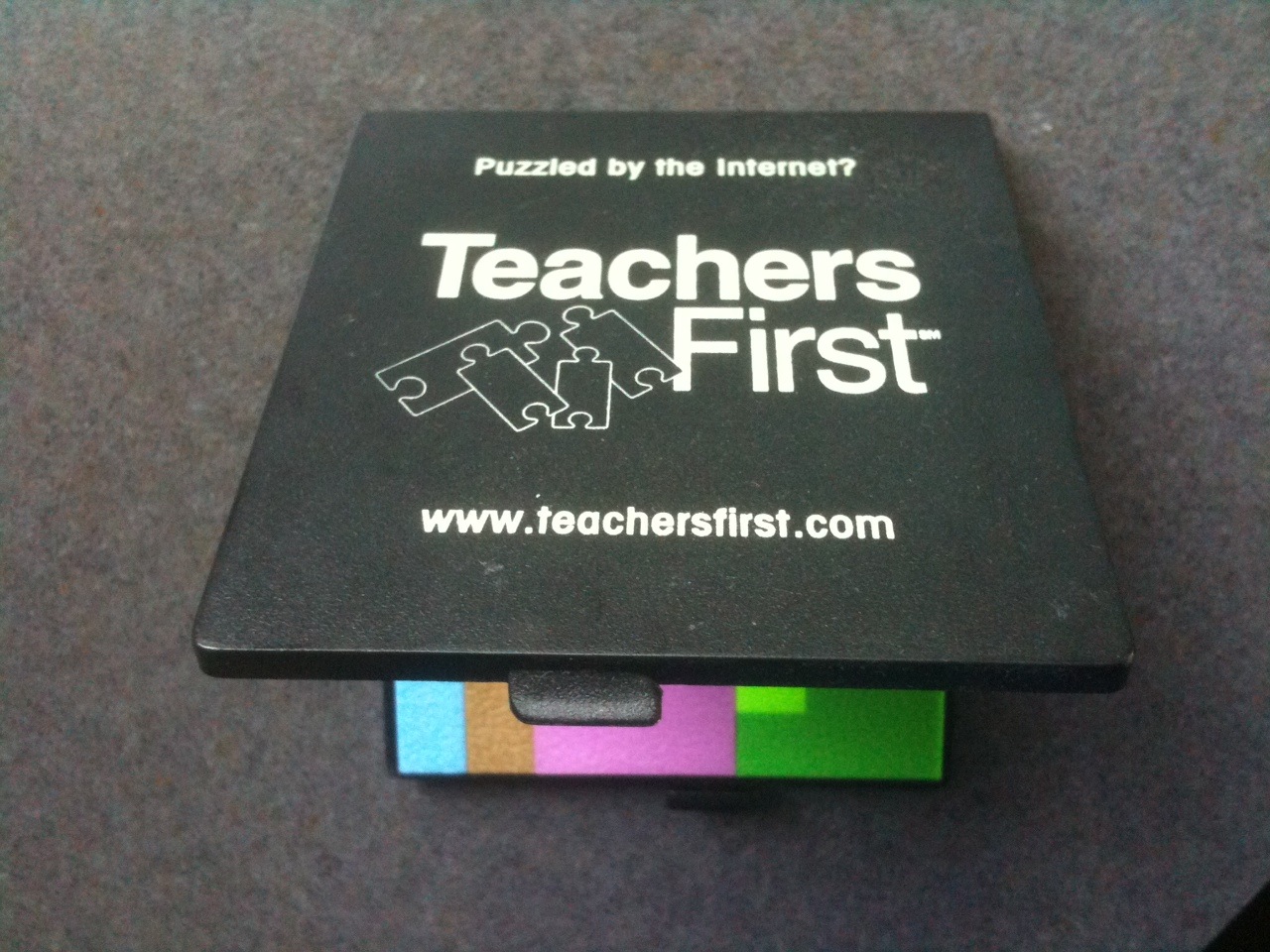Snapped in a box: a story of teaching and tech
From a dusty basement into the palm of my hand comes the story of TeachersFirst, snapped into a plastic case. As one usually impatient to have “archives” of anything important in electronic format, I will attempt to share the feel of this artifact with you virtually. What I cannot convey is the stunning moment of impact I felt seeing what this puzzle has to say about teachers and teaching during the fourteen years since it announced the 1998 mission of TeachersFirst.
The question, “Puzzled by the Internet?” on the top of the box says it all. Many of today’s teachers were not in the classroom in 1998 — except possibly as students. It was a time when only about half of the teachers I knew had ever used Google and many were innocently hooked on AOL. Web pages were text-heavy, and no one anticipated Twitter or blogs. How all this Internet stuff was supposed to fit into the world of chalk, worksheets, and VCRs was a mystery. The people at the Network for Instructional Television (NITV), now called The Source for Learning, talked to teachers and found out that they wanted help navigating and understanding how this new-ish thing called the Internet could help them teach (and learn). So TeachersFirst happened.
I hear you laughing now. When I saw the box, I laughed out loud. I remembered that TeachersFirst had given away these cute (and challenging) tangram-type puzzles, but somehow I had forgotten the question that had been printed on the top. This little puzzle is Teaching 1998 in a time capsule. I think I had better keep it in my desk drawer as a reminder of all that has happened since.
My mind fast-forwards to 2012. We would need a new promotional giveaway every three to six months of we want to snap the mysteries of changing technologies into a box with a cute question on top. Even the messages of last summer are too old, though teachers quietly confide that they haven’t had time to “catch up” yet! I wonder what we will be laughing at in 2015. One thing is for sure: we should back up our blogs and keep archives of what we say today. Maybe we should bury digital time capsules of the giveaways at ISTE 2012. If nothing else, it will be good for humor therapy, assuming the file formats are even legible.
Happy 14th birthday, TeachersFirst.






